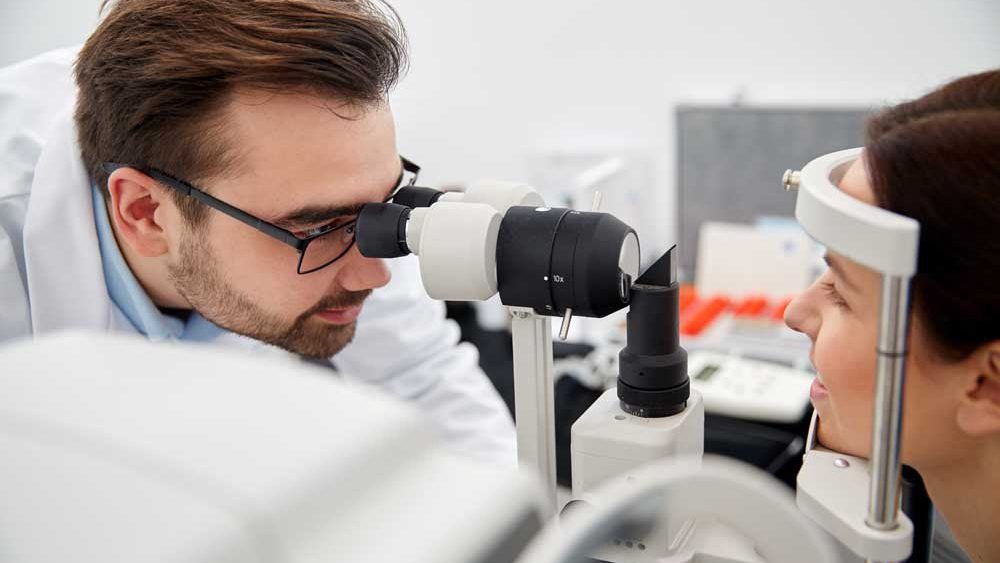What is Endophthalmitis?
Endophthalmitis is an infection of the tissues or fluids inside the eyeball. If you have symptoms, see an ophthalmologist as soon as possible as it is an urgent medical emergency and can blind you if it’s not treated quickly.
What the Different Types of Endophthalmitis?
There are two main types of endophthalmitis:
Exogenous Endophthalmitis
This is the most common type of endophthalmitis with this type, the source of the infection comes from outside the body. Bacteria or fungi gets inside the eye from surgery, an injection into the eyeball or an eye injury. Puncture wounds to the eye are the most likely cause of endophthalmitis.
Symptoms usually begin within only a few days of an eye procedure or injury. When symptoms begin quickly like this, it is acute endophthalmitis.
The infection can also develop more slowly. When symptoms take longer to emerge, it is chronic endophthalmitis. This happens when specific types of bacteria or fungi enter the eye.
Endogenous Endophthalmitis
This is the second main type of endophthalmitis. It starts as an infection in another part of the body and spreads to the eye. For example, this can happen with a urinary tract infection or blood infection.
How to Recognize Endophthalmitis?
The most common symptoms of endophthalmitis are:
- Eye pain that keeps getting worse after surgery, an injection or injury to the eye
- Red eyes
- White or yellow pus or discharge from the eyes
- Swollen or puffy eyelids
- Decreased, blurred or lost vision

When to see a Doctor for Endophthalmitis?
Eye injections and cataract surgery are two of the most frequent eye procedures and both can cause endophthalmitis, though it is not common. If you do have these symptoms, see your ophthalmologist right away as the infection can get worse very quickly.
Your ophthalmologist will perform several tests to diagnose your symptoms. They will look at your eye and test your vision and they will also ask about any recent surgeries, eye procedures or injuries. If you’ve had an eye injury, your doctor may order an ultrasound to see if there are any foreign objects in your eye.
If your doctor suspects you have an infection, they will perform a test called an aqueous/vitreous tap. This test involves using a tiny needle to take some fluid out of your eyeball which is then sent to a laboratory to test whether there is an infection
Endophthalmitis Treatment
Treatment is an injection of antibiotics or antifungal medicine into the eye. You may also get a steroid to reduce swelling and inflammation caused by the infection. With more serious infections, you may have vitrectomy surgery where your ophthalmologist removes vitreous gel from your eye then they injects medicine that prevents infection.
How to Prevent Endophthalmitis
- Use protective eyewear when doing things around the house that can injure the eye. This includes things like sawing wood.
- Wear appropriate eyewear and safety gear during contact sports.
- Follow your doctor’s home care instructions after eye surgery or an eye injection. For example, wash your hands before putting in eye drops. Don’t let the eye drop bottle touch the eye, which can contaminate the dropper.
Contact SightMD today to schedule an appointment with one of our doctors to discuss your vision health at one of our convenient locations!

Early Eye Exams for Children
The Importance of Early Eye Exams for Children As parents, we prioritize our children’s health and well-being, but often…

Healthy Diet and Cataracts
The Role of a Healthy Diet in Preventing Cataracts As we age, various eye conditions can develop that impact…

Understanding Newborn Hearing Screening
The Importance of Newborn Hearing Screening As you embark on this incredible journey of parenthood, there are numerous important…